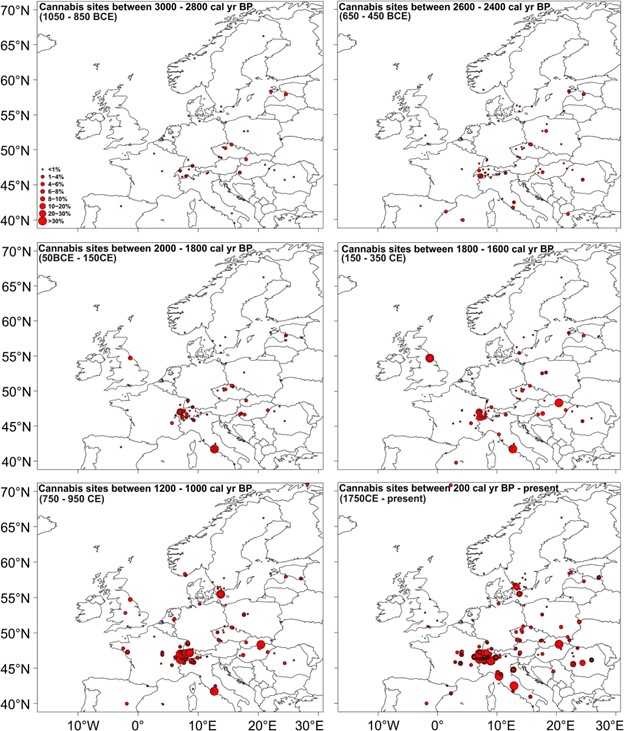Long before it became a modern talking point, hemp was already part of human history

A new study published in the Q1-ranked journal Vegetation History and Archaeobotany reveals that hemp cultivation in present-day Hungary dates back to the Copper Age—approximately 5450 years ago. The research, led by Dr. Enikő Magyari of our Department of Environmental and Landscape Geography and first-authored by PhD student Abigail Amponsaah Ofosu-Brakoh, explores the deep-rooted history of hemp in Central-Eastern Europe through pollen analysis and palaeoecological data.
The team’s findings suggest that early hemp cultivation may have accompanied the migration of pastoralist communities from the Pontic steppe. A marked increase in cultivation activity occurred in western Hungary during the Iron Age, particularly in the Hallstatt cultural period. Pollen records from Lake Baktai Nagy-tó, near Egerbakta in the Bükk Mountains, show consistent hemp cultivation from the 13th century until the mid-20th century. Expanding their analysis with the NEOTOMA palaeoecological database, the researchers also traced the earliest known evidence of hemp retting in Eastern Hungary’s Kokad Mire to around 100 BC—with critical data for this site provided by Ilona Pál.
More details can be found in the published paper: doi.org/10.1007/s00334-025-01046-7
Photo showing several Cannabis pollen under light microscope (×400 magnification)
This illustration from 1865 shows farm workers submerging hemp (Cannabis sativa) in a river—a process known as water retting. This method breaks down plant tissue to separate fibers from the stem. Photo obtained from the Science Photo Gallery.
Cannabis pollen relative pollen frequencies in Europe in selected 200-yr intervals from 1000 BCE to present; red circles indicate sites where Cannabis pollen was recorded, the varying sizes correspond with the pollen percentage for each 200-yr time slice. (Data obtained from NEOTOMA)
Geographical location of the study site with photos of the Egerbakta lakes




